TL;DR
Matthew C. Martelle
matthew@martelle.dev
Software Engineer III | Age of Learning (Creators of ABCmouse.com) | 2016-2022
- JavaScript, PHP, HTML, CSS (8 Years)
- Rust (4 Years)
- Flutter/Dart (2 Years)
B.S. Mechanical Engineering 2012, Cal Poly
Contact Information
Matthew C. Martelle
matthew@martelle.dev
Work Experience
My own apps: SHOW YOUR WORK, Lanthir-CLI, Crepe Bordeaux, DEML | January 2023 - Present
Age of Learning | January 2016 - December 2022
InterAct | January 2013 - October 2015
Age of Learning
Glendale, CA
Age of Learning corporate website
Age of Learning’s main product ABCmouse.com
Software Engineer III
January 2016 - December 2022
Projects
- Parent Section
- Billing
- Subscription Management
- Settings
- New Onboarding section
- Shortened Cancellation Path built for A/B testing
- Countless A/B tests for the Student Homepage (so many)
InterAct
Ventura, CA & Kenai, Alaska
Projects
Conoco Phillips Alaska
Verified and updated the piping and instrumentation diagrams of systems with pressure safety valves at the:
- Tyonek Oil Platform
- LNG Plant
General Consultant Work
- Injection Well Permit Analysis
- Emmy Oil Platform
Education
Mechanical Engineering B.S., 2012
California Polytechnic State University, San Luis Obispo, CA
Skills
JavaScript, PHP, HTML, CSS (8 Years)
- Javascript Frameworks
- Angular 1.x
- Lit Html, Lit Element
- AofLJS 3.x
- Mithril
Rust (4 Years)
- CLI tools, and more CLI tools.
- Bevy ECS Game Engine
- Seed-RS (Elm-like wasm website framework in Rust)
- Iced
Flutter/Dart (2 Years)
- Apps
- WASM websites
Lua (3 Years)
- Love2d Game Engine
- Computercraft robots in Minecraft
- PICO-8 Fantasy Console
C# (1 Year)
- Unity Game Engine
Languages I’ve dabbled in for fun
- Go
- CUE
- Elm
- Haskell
- OCaml
- Zig
- Scheme
- Python
- C/C++
- Nix
- Nu
- Fish
Personal Projects
Websites
- Active Recall JS | Website | GitHub
- Mind Monsoon | Website | GitHub
- Visual Metronome | Website | GitHub
CLI Tools
- Crepe Bordeaux clipboard tool | GitHub
- DEML (DAG Elevation Markup Language) | GitHub
Apps
- SHOW YOUR WORK cascading calculator
- Solunar Clock | GitHub
Game Design Exploration
- One button input:
- Curling Game
- Square Chicken Fighting Game
Bevy Game Jam Games
Mechanical Engineering
- FFN 3000 (Forget Fan Noise) Fanless Chimney Effect passive laptop cooler
- DT BCS RC Aircraft (Differential Thrust, Blown Control Surface)
SHOW YOUR WORK
A cascading table calculator inspired by Scheme, RPN, and Excel.
For when you want more than a calculator app, but don’t want to wait for Excel to open.
Calculations are arbitrary precision. The copy/paste helper allows precision and number format sent to the clipboard to be easily adjusted.
Navigate with VIM motions.
Change inputs and see all intermediate values.

In progress. It works well enough for my personal usage, but I’d like to polish out some rough spots before I release it.
Built in Flutter
Crepe Bordeaux
The cross-platform clipboard cli tool | GitHub | crates.io
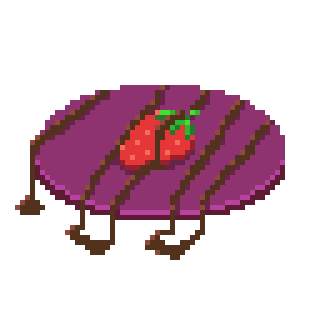
Copy:
$ echo "foo" | cb
Paste:
$ cb
foo
Clear:
$ cb clear
Save to a register:
$ echo "thing I want to save for a while" | cb memorable-name
Paste from a register:
$ cb memorable-name
thing I want to save for a while
List registers:
$ cb list
memorable-name
Clear a register:
$ cb memorable-name clear
Clear system clipboard and all registers:
$ cb clear-all
Select a register interactively with fzf (or skim) in bash:
$ cb $(cb list | fzf)
No clipboard available?
cb will write to a .txt file in the folder determined by Rust’s std::env::temp_dir
Want to use a different folder?
Set the environment variable CB_DIR
Why, though?
I was enjoying Amila’s cb interface on my main computer and had already forked it to add Wayland support with arboard. However, on a minimal install of NixOS with no display/window manager there was no clipboard for it to use, so I made this.
Why “crepe-bordeaux”, though?
The names clipboard-cli and cli-clipboard were already taken, and tealdeer inspired creativity.
DEML (DAG Elevation Markup Language)
Languages designed to represent all types of graph data structures, such as Graphviz’s DOT Language and Mermaid JS’s flowchart syntax, don’t take advantage of the properties specific to DAGs (Directed Acyclic Graphs).
DAGs act like rivers. Water doesn’t flow upstream (tides and floods being exceptions). Sections of a river at the same elevation can’t be the inputs or outputs of each other, like the nodes C, D, and E in the image below. Their input is B. C outputs to F, while D and E output to G.
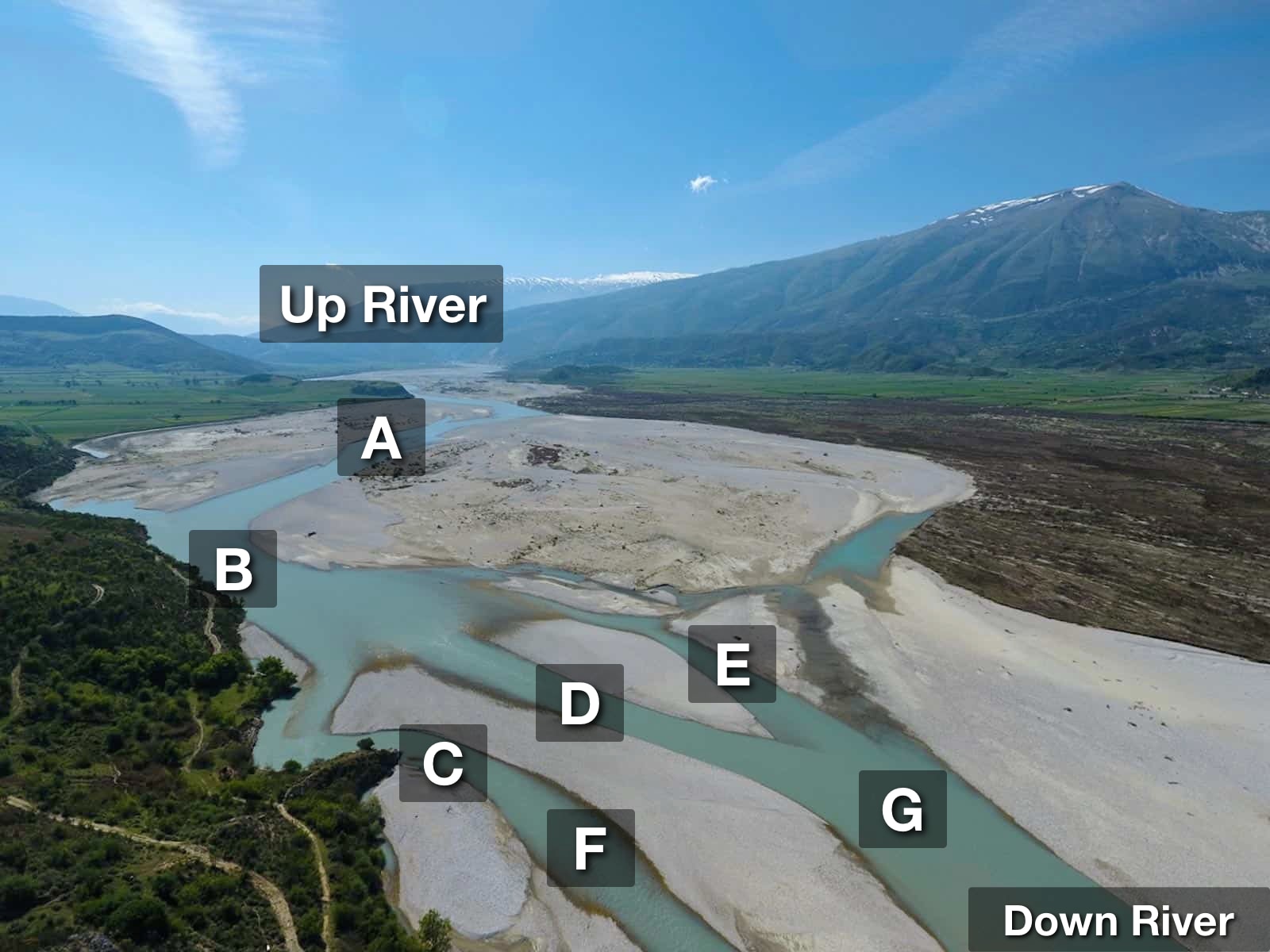
DEML’s goal is to use this ordering as part of the file syntax to make it easier for humans to parse. In DEML we represent an elevation marker with ---- on a new line. The order of elevation clusters is significant, but the order of nodes between two ---- elevation markers is not significant.
UpRiver > A
----
A > B
----
B > C | D | E
----
C
D
E
----
F < C
G < D | E > DownRiver
----
DownRiver < F
Nodes are defined by the first word on a line. The defined node can point to its outputs with > and to its inputs with <. Inputs and outputs are separated by |.
Dagrs
Dagrs is a library for running multiple tasks with dependencies defined in a DAG. In DEML, shell commands can be assigned to a node with =. DEML files can be run via dag-rs with the comand deml run -i <filepath>.
To compare the difference in readability, here is the Dagrs YAML example in both YAML and DEML
YAML
dagrs:
a:
name: "Task 1"
after: [ b, c ]
cmd: echo a
b:
name: "Task 2"
after: [ c, f, g ]
cmd: echo b
c:
name: "Task 3"
after: [ e, g ]
cmd: echo c
d:
name: "Task 4"
after: [ c, e ]
cmd: echo d
e:
name: "Task 5"
after: [ h ]
cmd: echo e
f:
name: "Task 6"
after: [ g ]
cmd: python3 ./tests/config/test.py
g:
name: "Task 7"
after: [ h ]
cmd: node ./tests/config/test.js
h:
name: "Task 8"
cmd: echo h
DEML
H > E | G = echo h
----
G = node ./tests/config/test.js
E = echo e
----
F < G = python3 ./tests/config/test.py
C < E | G = echo c
----
B < C | F | G = echo b
D < C | E = echo d
----
A < B | C = echo a
Mermaid JS
To convert DEML files to Mermaid Diagram files (.mmd) use the command deml mermaid -i <inputfile> -o <outputfile>. The mermaid file can be used to generate an image at mermaid.live
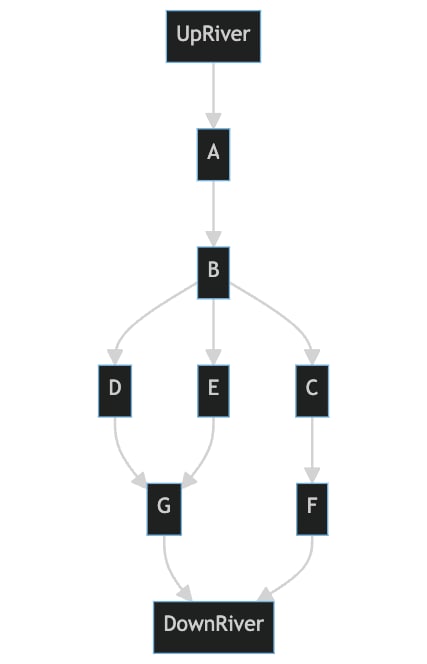
Goals
- Put my idea for an elevation based DAG representation into the wild
- Run DAGs with dag-rs
- Convert DEML files to Mermaid Diagram files
- Syntax highlighting tree-sitter-deml
- Add a syntax to label edges
Why, Though?
I was thinking about how it’s annoying in languages like C when function declaration order matters. Then I wondered if there could be a case when it would be a nice feature for declaration order to matter and I thought of DAGs.
Active Recall JS
An interactive auditory flash card system with spoken prompts using the text to speech features of Web Speech API
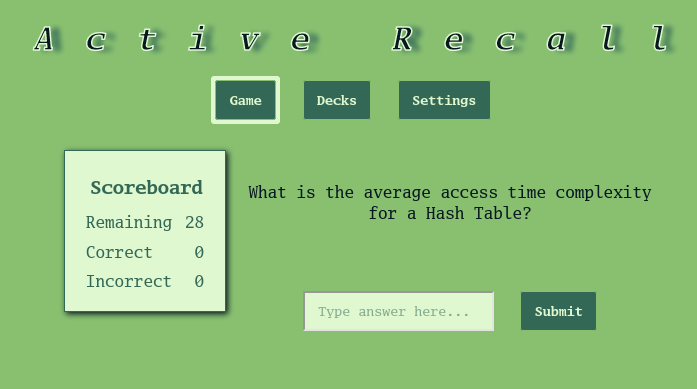
Inspired by the Anki flash card system.
Made with MithrilJS
Solunar Clock
A 24 hour solar lunar clock built with Iced.
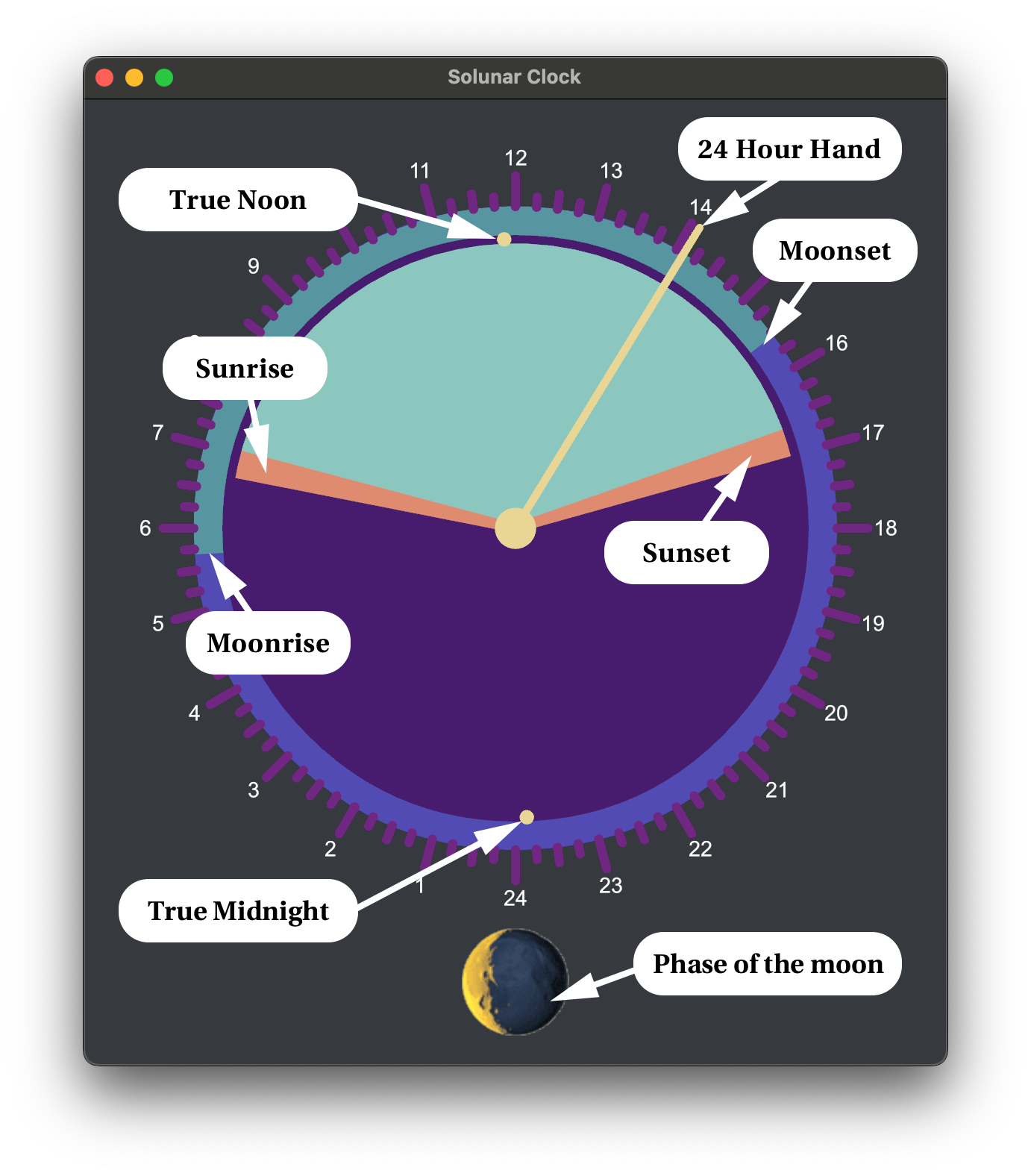
Mind Monsoon
A cooperative brainstorming website where multiple people can add ideas and upvote or downvote them.
I use it most often when a group of people want to go somewhere for lunch but can’t decide where to go. This can really speed up the process.

Hosted at mindmonsoon.com (sadly, brainstorm.com was taken)
Built with AofL JS
Pixel Art
Dog Portraits
Some of my friend’s dogs.



















Horse Portraits
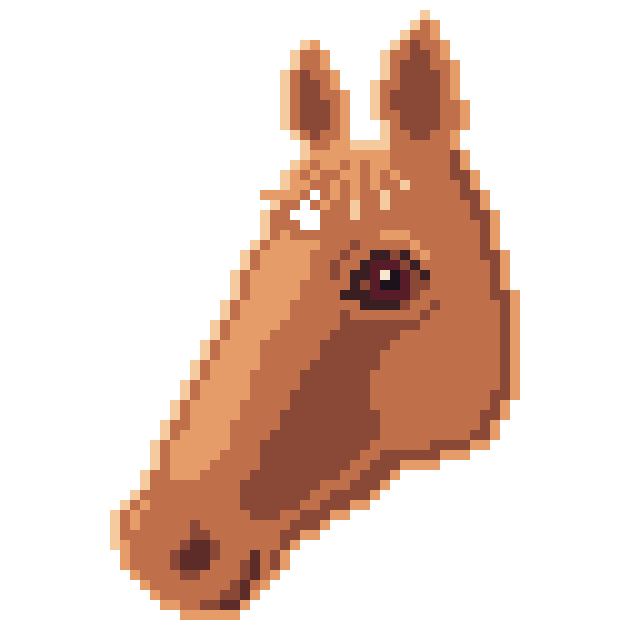
Slack/Discord Emotes

Other

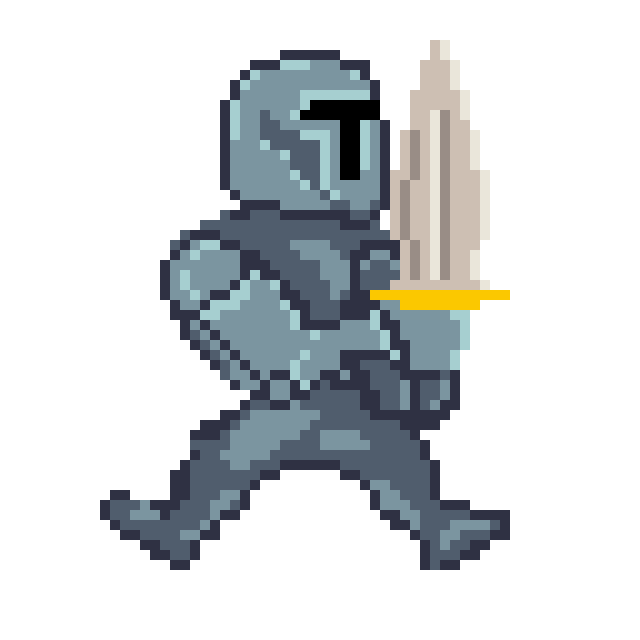
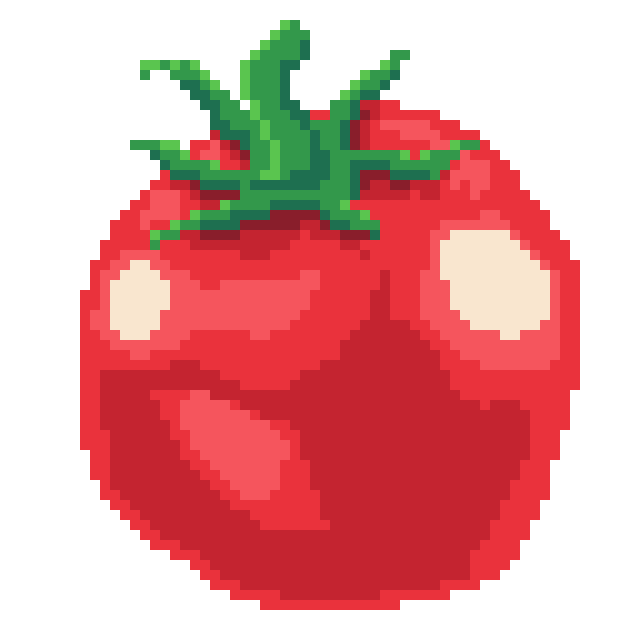
Elm Experiments
I started using Elm in the Summer of 2024. I’ve enjoyed the strong types, good error messages, functional paradigm, and excellent API design so much that whenever an interesting idea crosses my mind I tend to explore it in Elm first.
Here are some of those experiments.
Probably Maybe
An Elm webpage to convert between probability representations.
In high availability systems the concept of uptime in terms of “Nines” refers to the number of nines in the uptime percentage, for example 99.999% is 5 nines. The “Nines” representation of probability is easier to understand than standard deviation or Six Sigma. However, I wanted to represent probabilities with the number of coin flips in a row, or dice rolls to meet a given probability.
I assumed the math would involve a log somehow. It ended up being just one log, but the base of the log depends on the number of sides on the coin or dice. So calculating the number of rolls for a 6 sided die is log base 6 of the 1 in x chance.
Another interesting probability that I added later is the number of rolls of a given 1 in x chance to have a certain chance of having at least one occurance. These number are much harder for my human brain to predict. For example it takes about 7 rolls of a 1 in 10 chance to have a 50% chance of at least 1 occurance. I would assume the number would be closer to 5 rolls, since 5 is 50% of 10, but that is not the case. It seems to be a helpful way to bridge the gap between statistics of huge sample sizes and the statistics of smaller everyday life sample sizes.
Practical Statistics
For a given statistical probability, find the chance of 1 occurrence within a sample size, or find the sample size required to reach a specific chance of 1 occurence.
I added a version of this to Probably Maybe and found it useful enough to put into its own tool. The statistics math here isn’t really new, just applied differently. It’s trading a traditional confidence interval for a fixed occurence amount.
Visual Metronome
Reading up on the Web Animation 2 specs I realised this visual metronome would be easy to make.
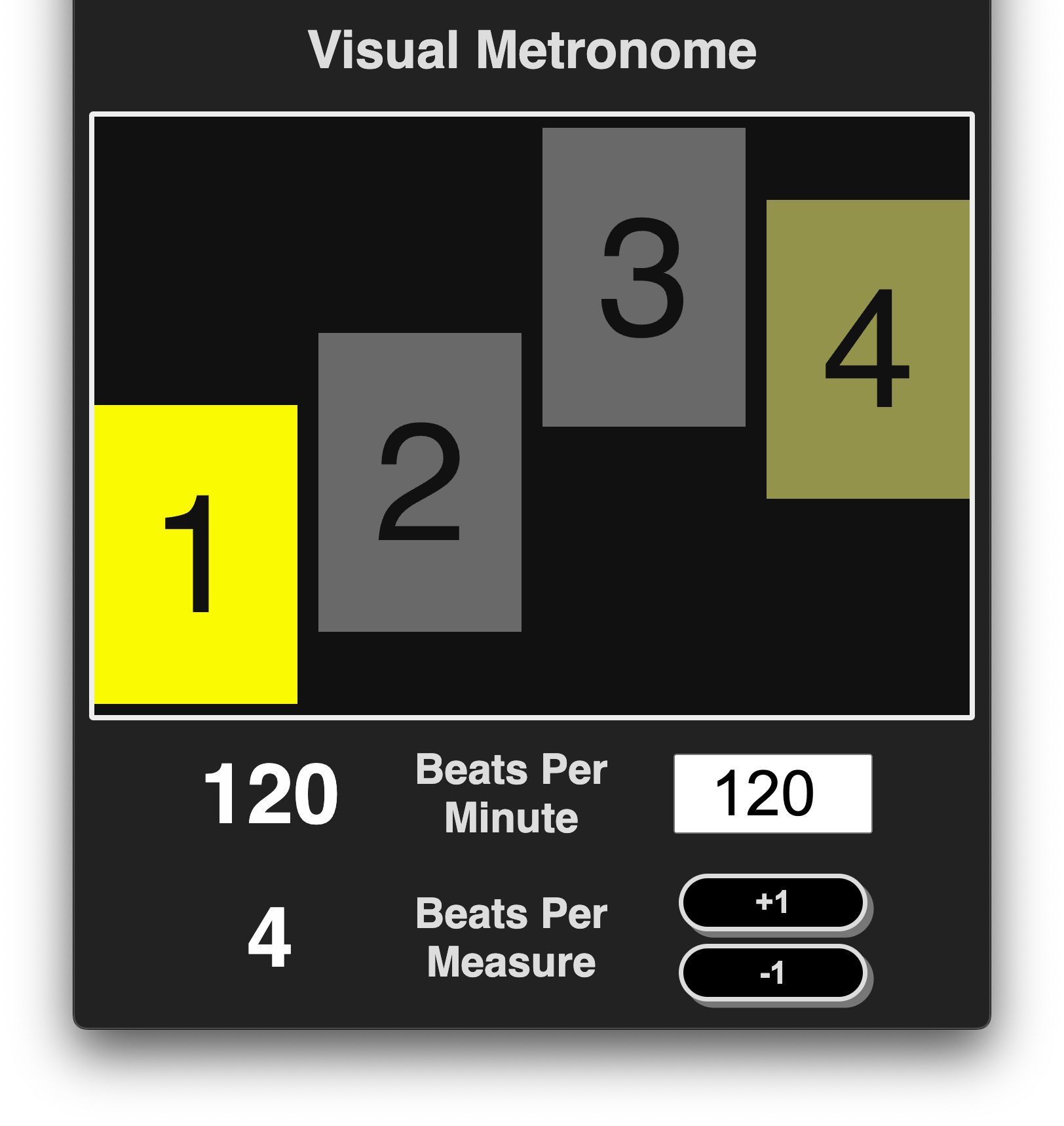
Built in Elm
Reasonable Irrational Ratios
Exploring pseudo-random distributions between 0 and 1 with techniques described in this talk by Electronic Arts SEED about blue noise and other randomness generation methods.
The histogram of the Golden Ratio is incredibly consistent, but unfortunately predictable. Blue Noise is an unpredictable alternative, with decent histogram behavior.
Curling
An exercise in minimalist game design to make a game with just 1 button for player input.
Toggle the Push button on and off to get the within the target, but not past it. Hide the speed indicator for a greater challenge.
The blog of Matthew Martelle
Latest
Human Thoughts about Generative Artificial Intelligence
Comment on Github
The 5 E’s of Engineering Priority
Should an engineering project be done? Is it:
- Ethical: Required
- Economical: Required
- Effective: Required
- Efficient: Bonus
- Elegant: Double Bonus
Utility Lanyard
How to make a lanyard with a finger loop and a wrist loop that can be easily attached and detached from things.
- Cut a string to 32 inches (this fits my wide hands, 36 inches is good if you like puns)
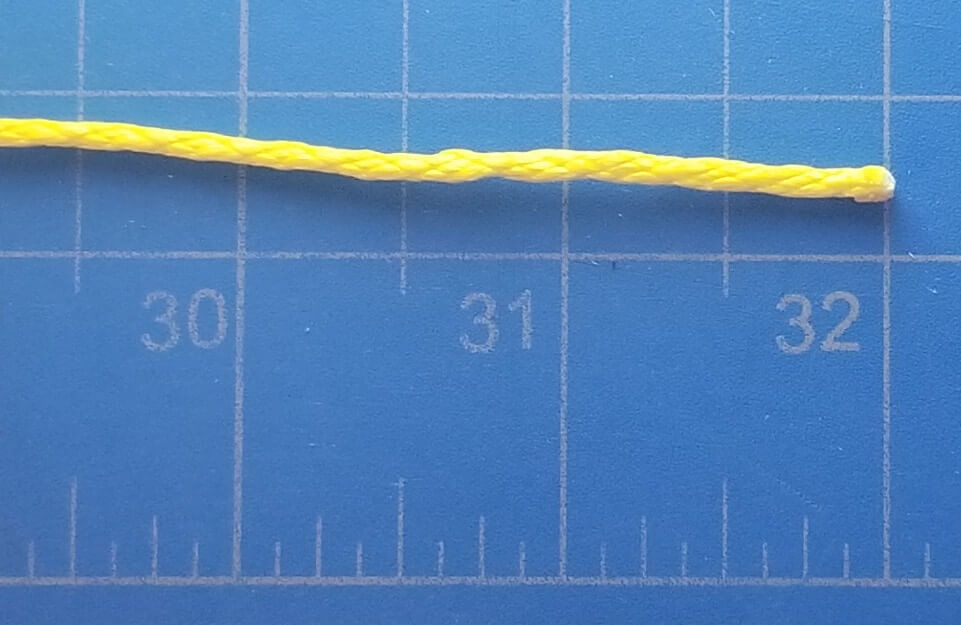
- Fold in half and tie a figure-8 knot with both sides near the end.
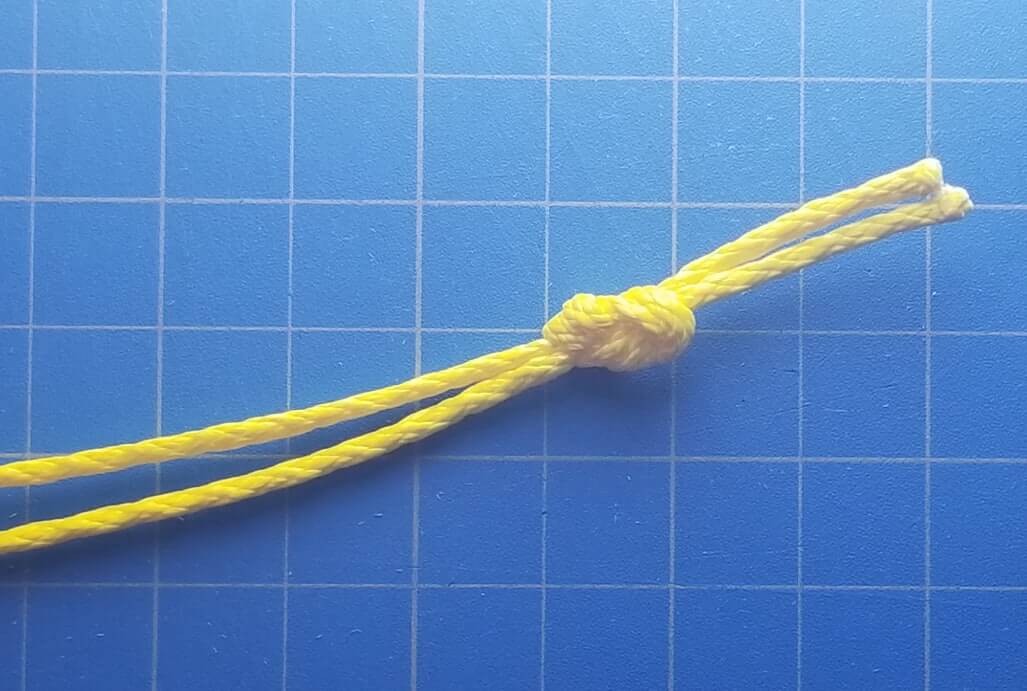
- Tie another figure-8 knot and adjust it so you can comfortably fit a finger through it.

- Tie a third figure-8 knot and adjust it so your hand can just get through.
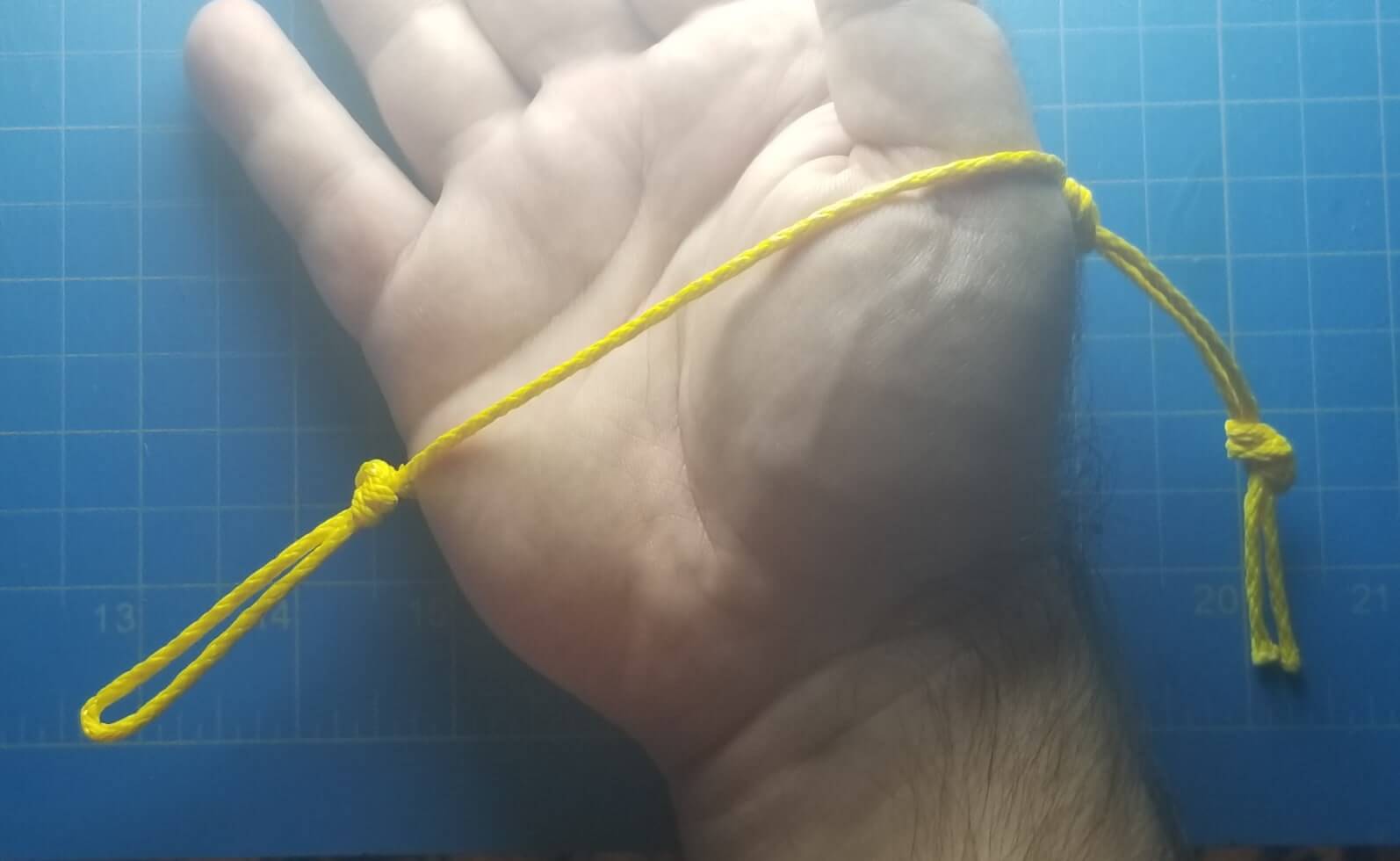
- Tie to item with a cow hitch. That’s it!
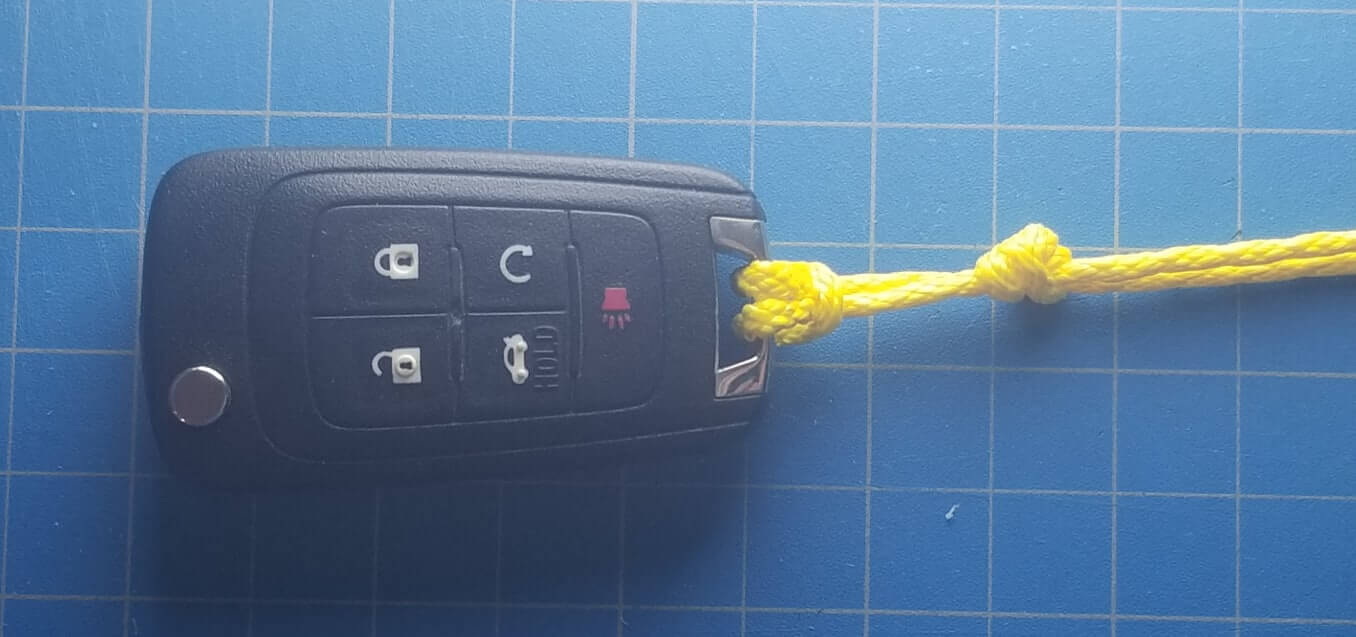
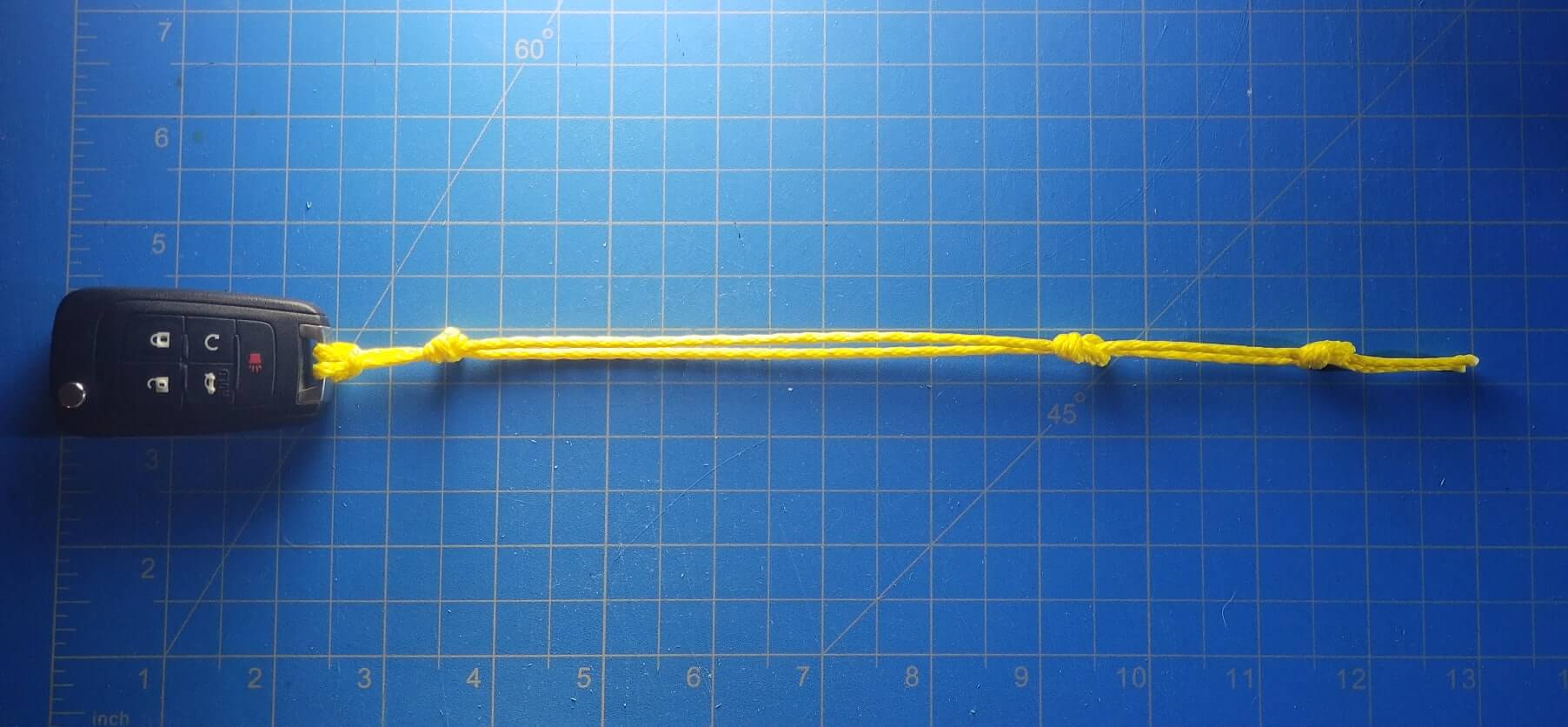
When the lanyard is around your wrist it shouldn’t fall off on accident.
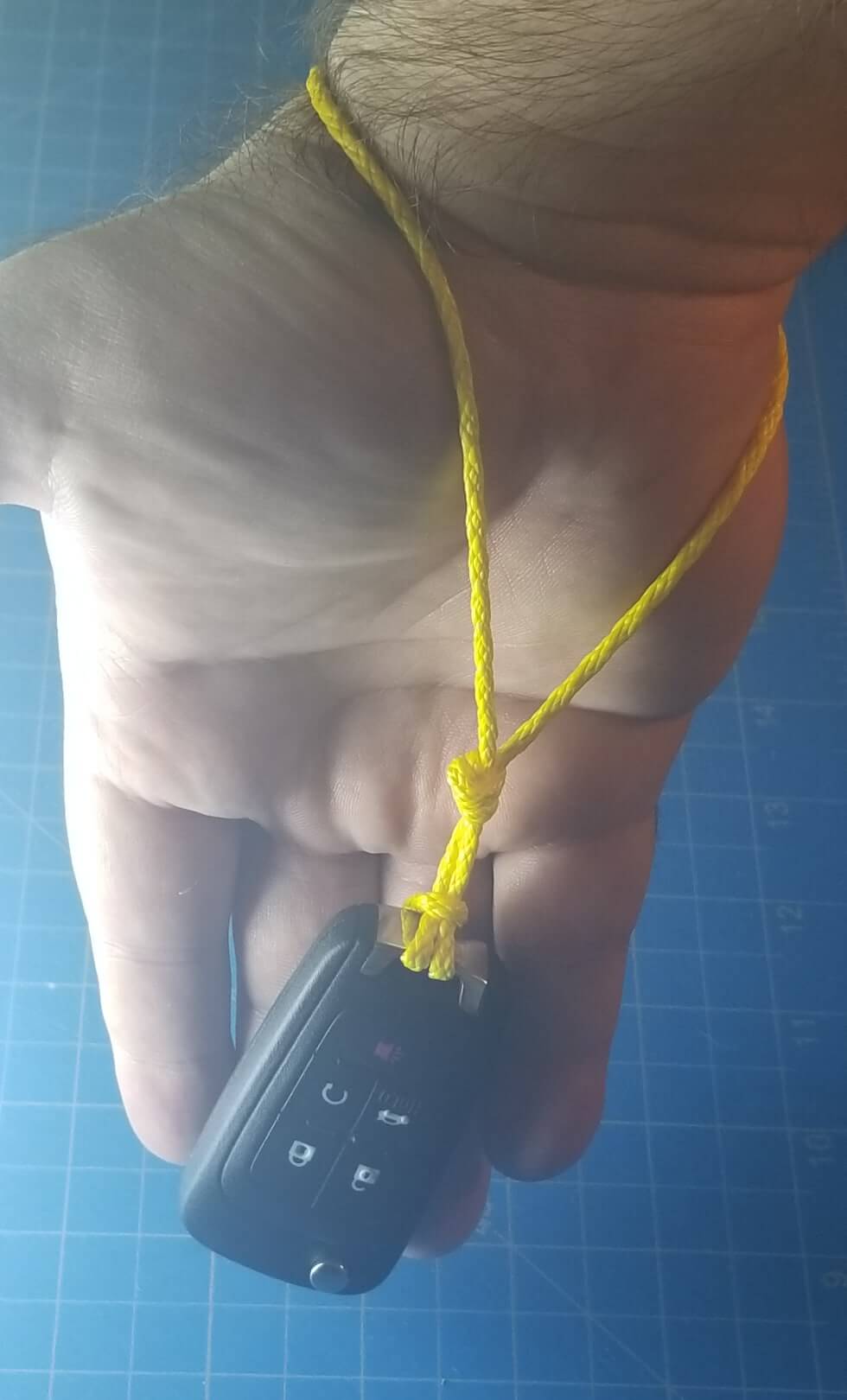
The lanyard can be attached to other things
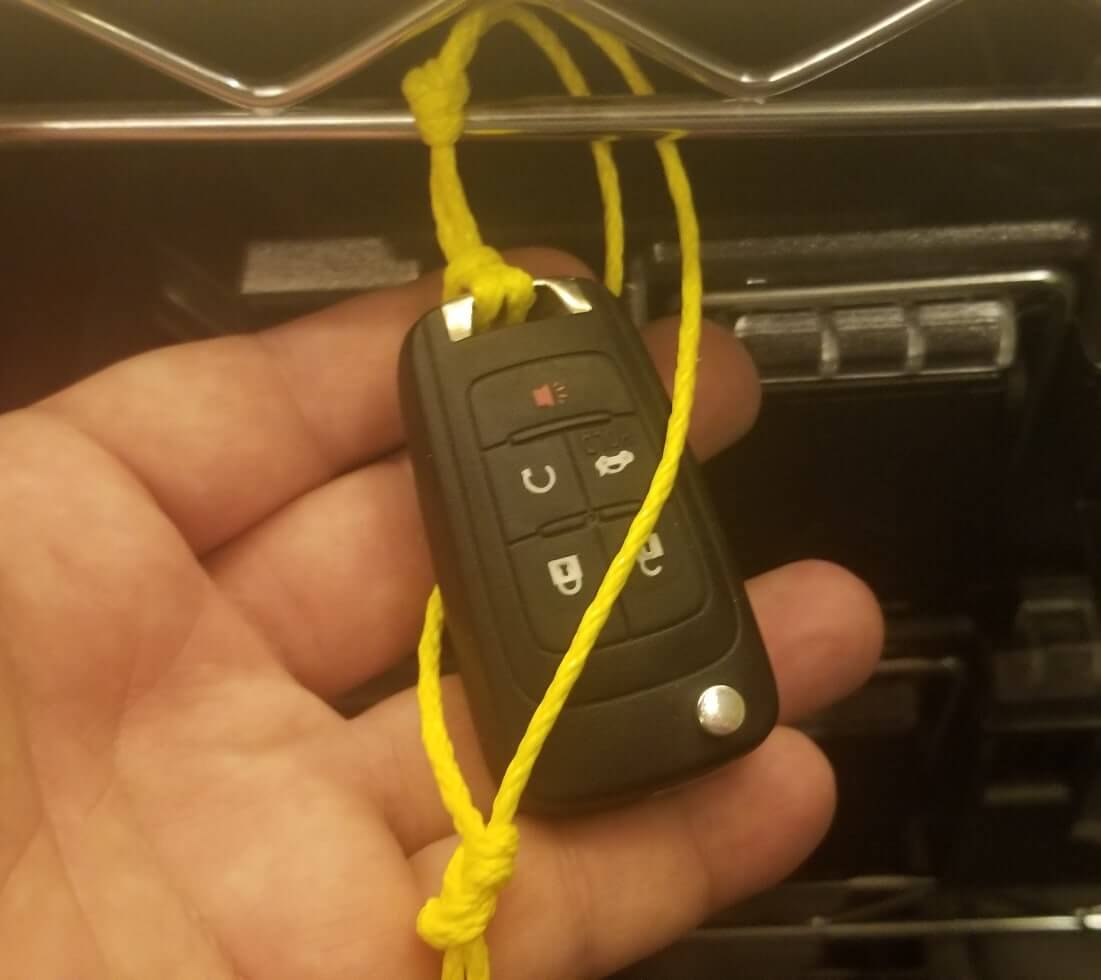
With a handy pull loop
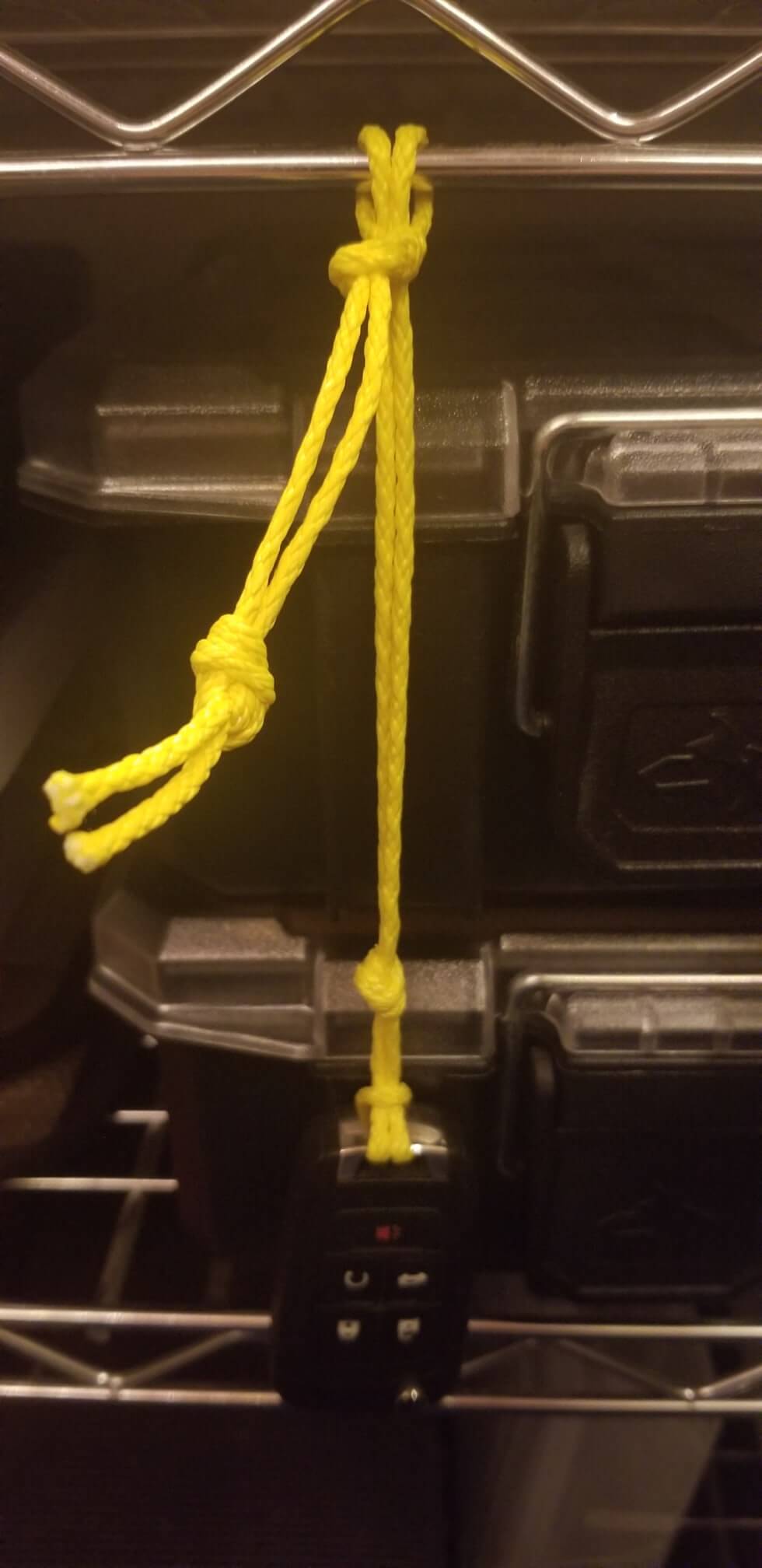
To loosen it with.
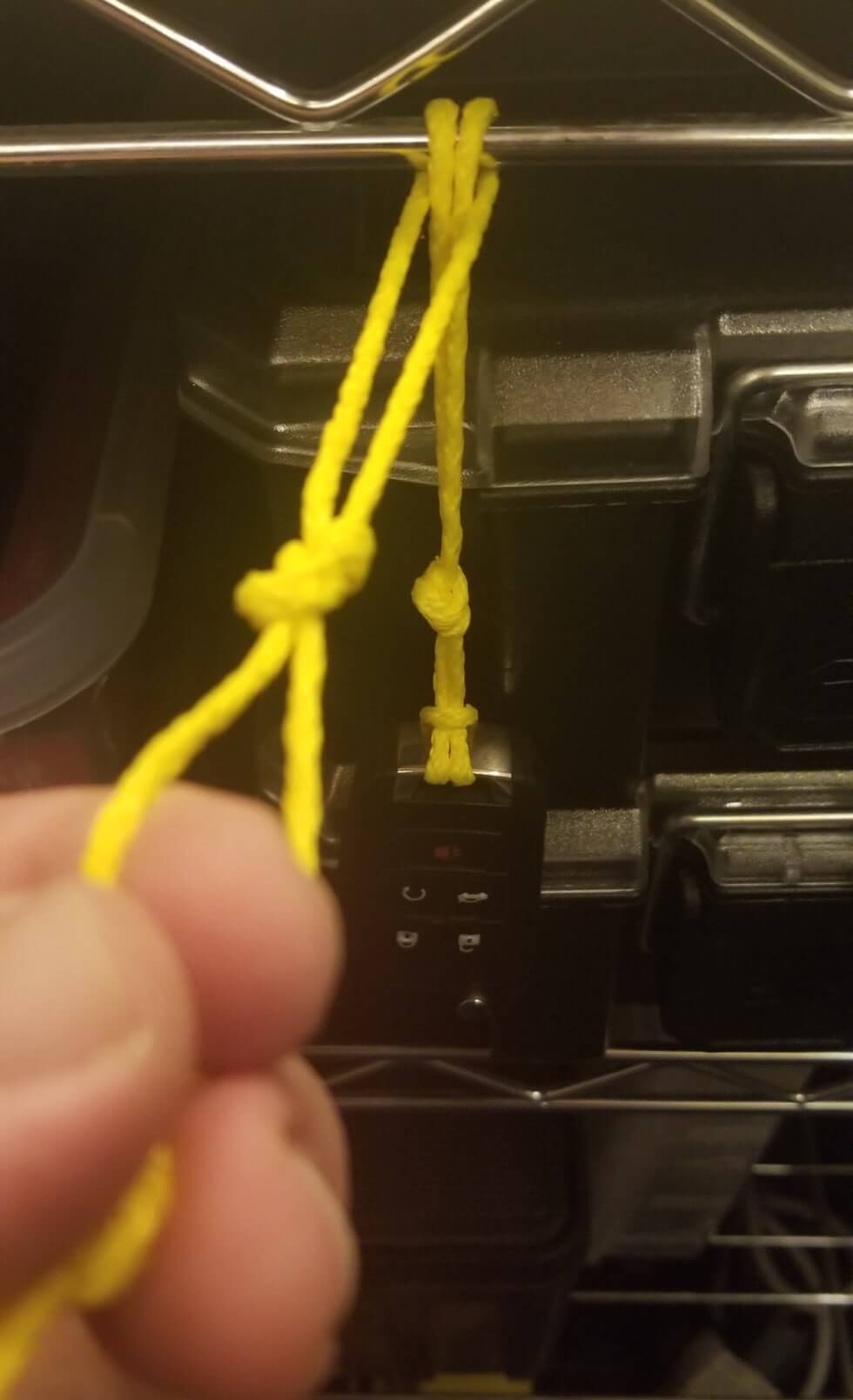
Enjoy!
On Notes and To Do Lists
TL;DR
I went from the regular Kanban pattern of ToDo -> Doing -> Done in a web-app to Collected -> Filtered -> Sorted -> Done using local files in a domain specific language with the file extension .oats.
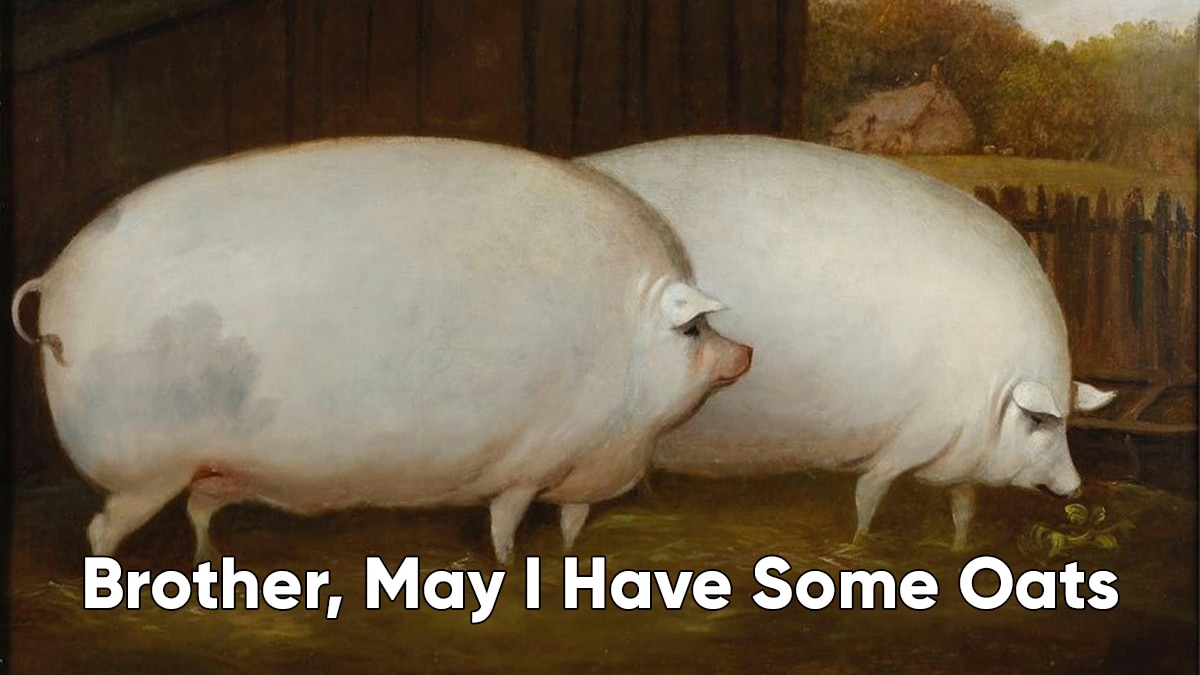
Kanban
In an effort to combat the friction of context switching between tasks I started taking notes using a simple form of Kanban (ToDo, Doing, Done) that I could nest inside of itself as needed. So large tasks that needed to be broken up into subtasks would get a new instance of Kanban inside of the large task.
WorkFlowy
The best software I found for this task was WorkFlowy. It has virturally infinite nesting of nodes. (I don’t use WorkFlowy anymore, but it was a formative stepping stone)
This is a project with nested Kanban in WorkFlowy.
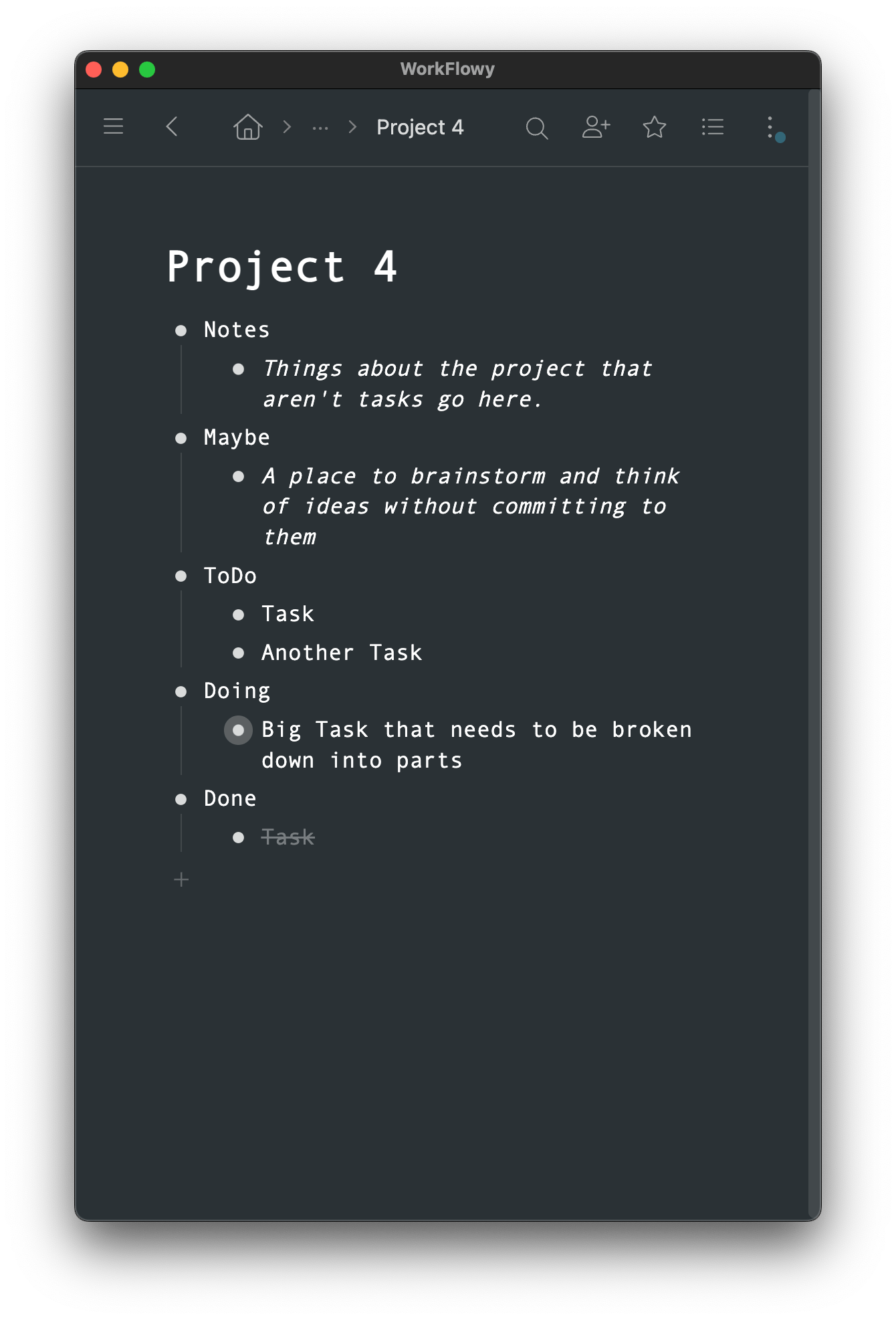
Clicking on a child node Big Task that needs to be broken down into parts navigates to a new page where that node is now the main parent node.
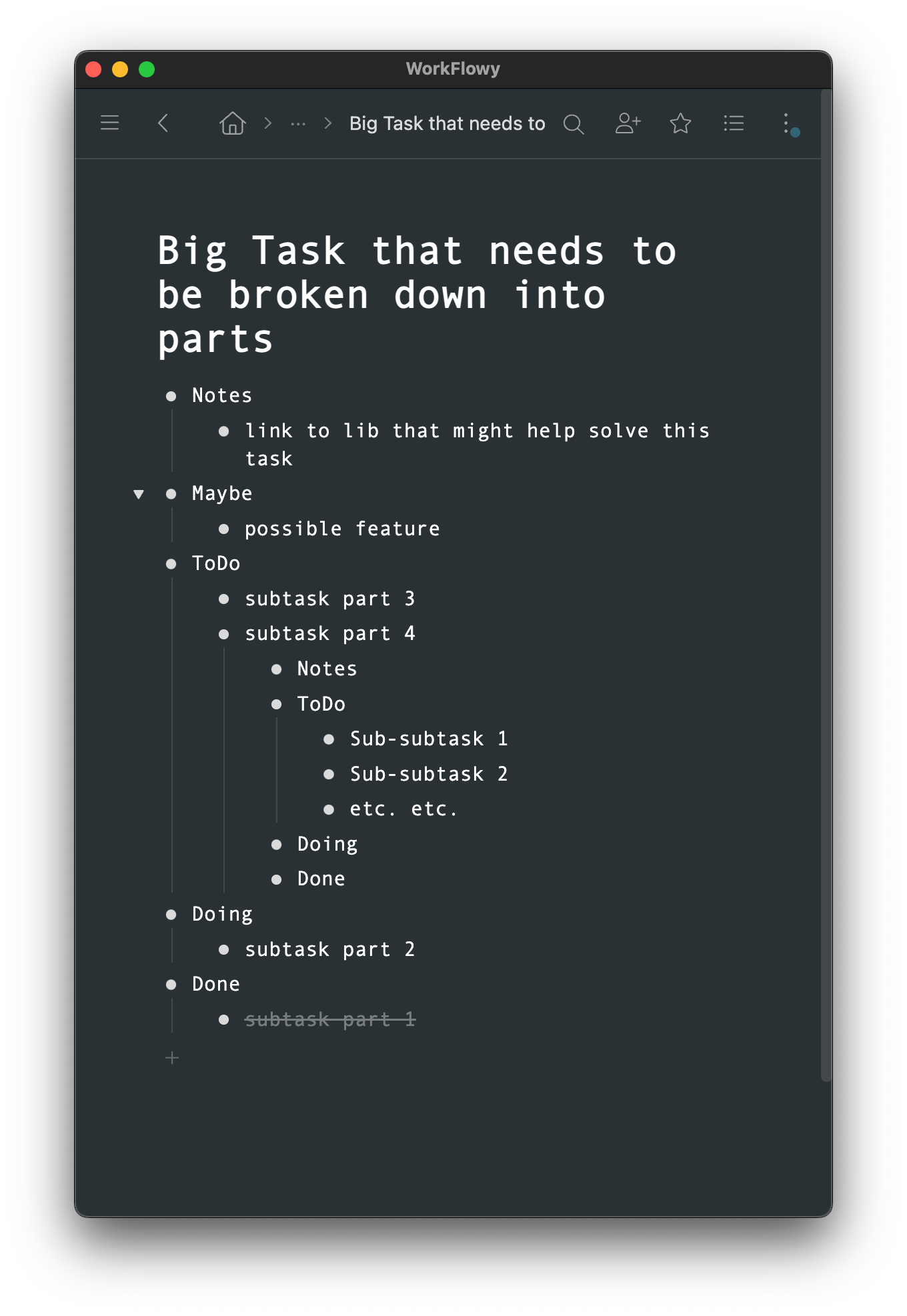
Brainstorming
Sometimes I wanted to do some brainstorming and record it within the nested Kanban structure. I started by adding a brainstorm node in the notes section.
- Notes
- Brainstorm
- Curated
- Brainstorm item that I actually liked
- Aggregated
- Brainstormed item A
- Brainstormed item B
- Curated
- Brainstorm
- ToDo
- Next most important item.
- Doing
- Currently working on this item.
- Done
- Already did this.
It proved so useful that brainstorming was soon folded into the ToDo nodes.
- Notes
- ToDo: Aggregated
- Brainstormed item A
- Brainstormed item B
- ToDo: Curated
- Brainstorm item that I actually liked
- Next most important item.
- Doing
- Currently working on this item.
- Done
- Already did this.
By convention I would order the items in ToDo: Curated by priority to be easily moved down into Doing. This practice was codified into it’s own node, Sort, when I refactored the node names into more specific terms.
- Collect
- Brainstormed item A
- Brainstormed item B
- Filter
- Brainstorm item that I actually liked
- Sort
- Next most important item.
- Apply
- Currently working on this item.
- Done
- Already did this.
Lanthir
Mermaid JS: The Complexity Extreme
Some time ago I made a CLI tool to follow along flow charts and prompt the user about each decision to make and action to perform. First I made it parse Mermaid.js files .mmd that used the flowchart syntax. While powerful and likely Turing complete, making .mmd files for impromptu workflows was a pain, even with the feature full Mermaid Live Editor.
.txt: The Simplicity Extreme
For very simple usecases I made Lanthir parse .txt files one line at a time. Each line a new task to prompt the user. Simple, but often too simple.
OATS: The Goldilocks Zone
Still quite simple but a useful middle ground. Not Turing complete. CUE Lang’s docs intrigued me when it mentioned that it is intentionally not Turing complete. There is less for our human brains to think about.
OATS (Or And Then Sequences) only uses ~ & | ? = and newlines as special symbols, like so:
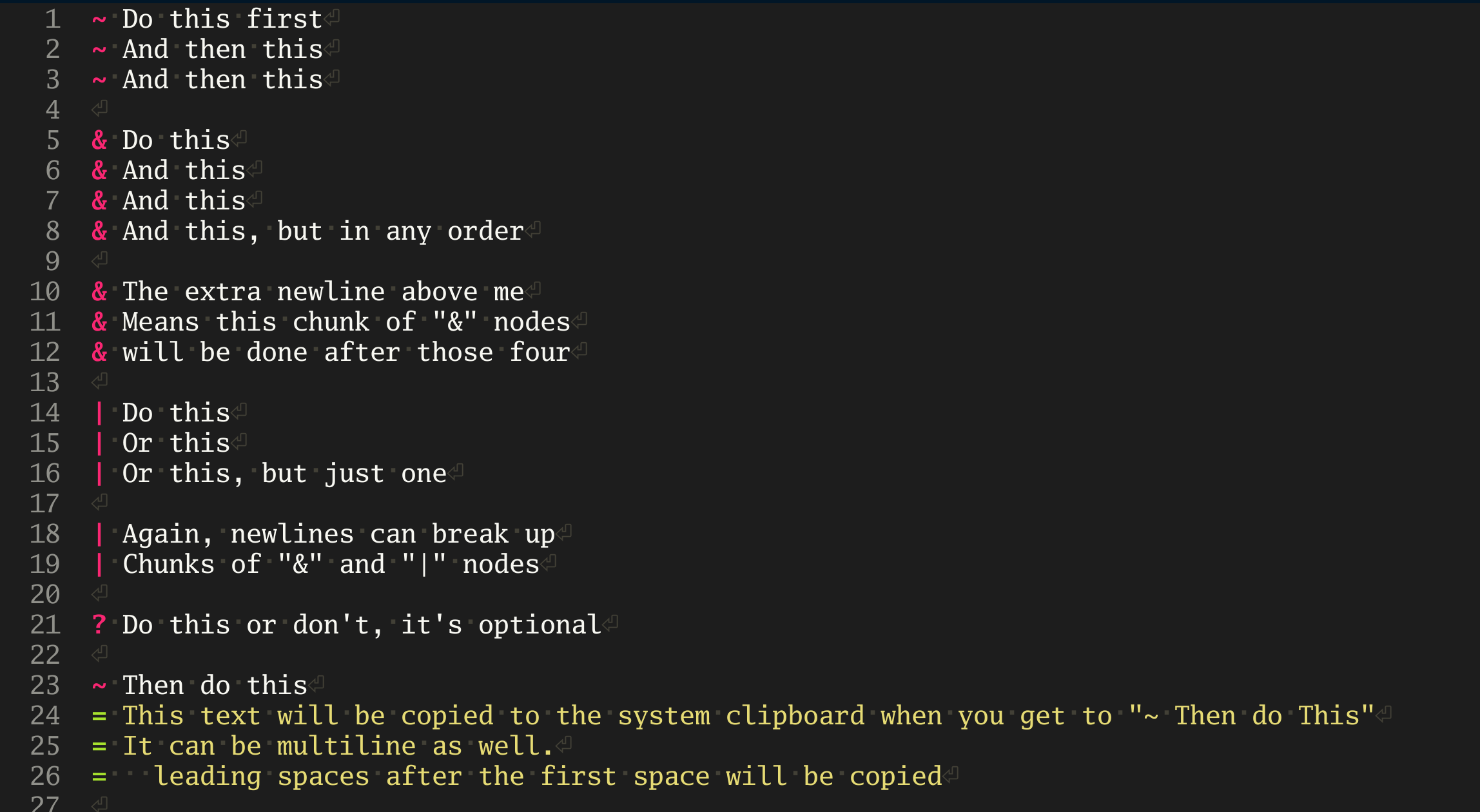
Here is the CLI tool Lanthir processing the OATS file:
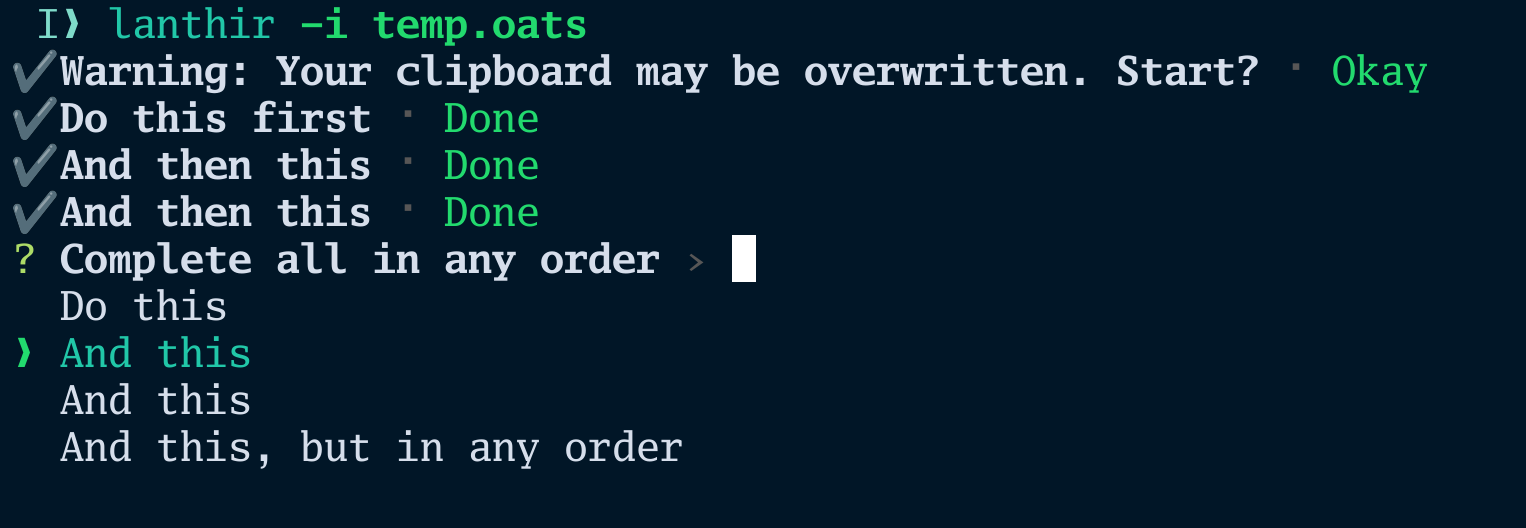
The nested Kanban nodes in OATS.
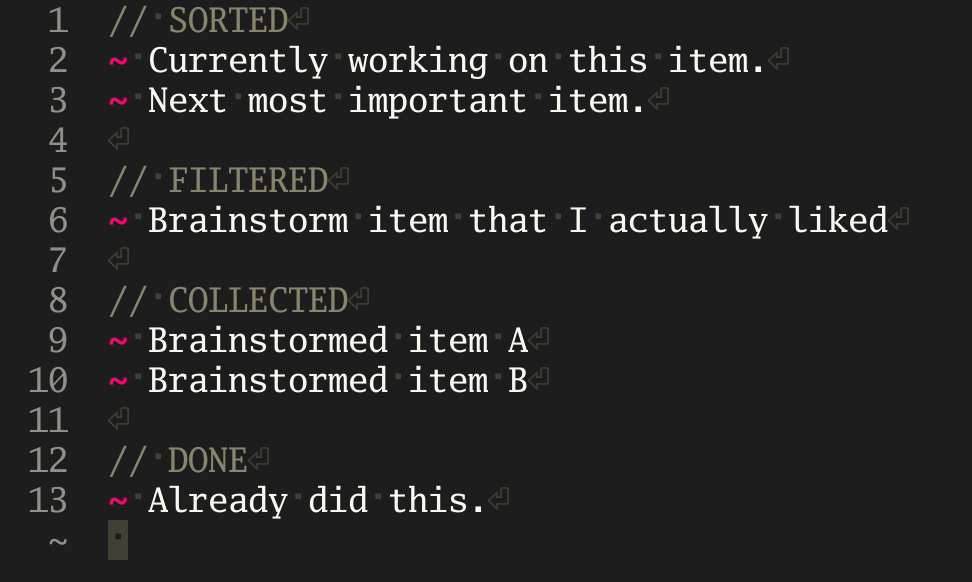
I don’t always use Lanthir to prompt every item step by step. Just reading the OATS file on it’s own is quite easy to parse mentally. I only need to think about the items in one chunk at a time. Items outside of that chunk can be ignored as far as the decisions in OATS are concerned. In fact it is simple enough to use in written or printed form.
// DONE
~ Write blog post about Lanthir and Nested Kanban.
Human Thoughts about Generative Artificial Intelligence
The Same Search Space
The set of all data (all possible combinations of letters, numbers, or binary data. The representation isn’t critical) contains a subset of the data that we call art. Within the subset of art, is yet another subset called good art.
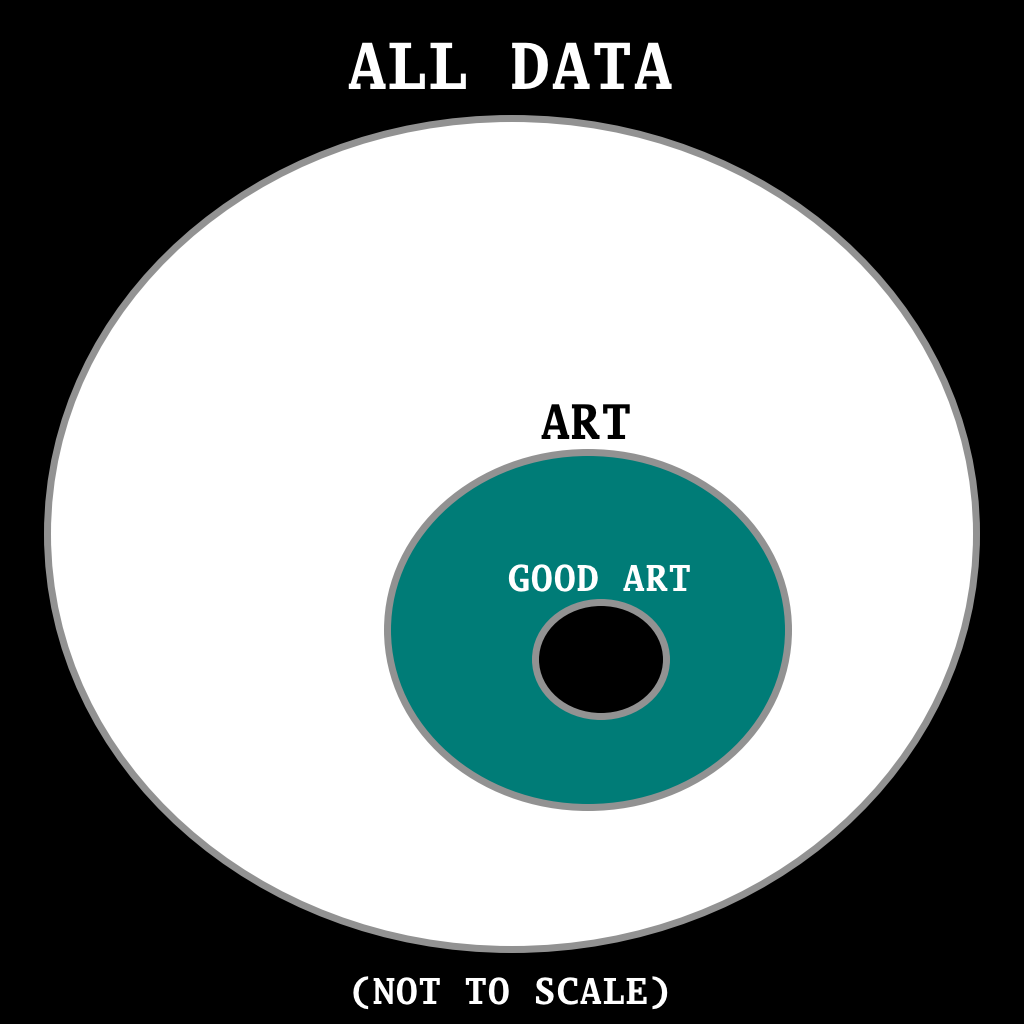
Whether the searcher of that data set is monkeys hitting typewriters, Shakespeare, random number generators, artists, me, you, or generative AI, the data set being searched is the same. The method of searching may be different, but when the proverbial monkeys eventually recreate Hamlet, it isn’t going to be any less Hamlet just because the typewriter monkeys discovered it too. If an LLM recreates Hamlet, it doesn’t suddenly render the original work soulless.
For hobby artists, generative AI can fill the gaps in their skillsets that they didn’t have the time or energy to fill.
It does suck for professional artists. I wouldn’t want to work hard to be a great cartographer using a compass, telescope and sextant only to see a drone fly overhead with a full 3d laser scanner mapping out the environment at speeds previously unimaginable. Copyright protection for artists guaranteed by the global superpower was cool for artists under that umbrella, but empires don’t last forever. Working artists might never have it as good again.
Creation vs Curation
Sturgeon’s Law
Ninety percent of everything is crud
In the post-AI timeline it might be closer to ninety-nine percent, but it is still mostly crud. Finding the diamonds in the rough has always been part of the process. AI creates more rough to sift through but can also aid in the sifting.
Some of my friends have only been sent the absolute best songs that I’ve prompted Suno AI to generate. They probably think it is much more consistent than it actually is. DJs have been doing this for decades, focusing on the cream that rises to the top of the music industry. Will Content Curators be a thing? Probably, but I think it needs a better name.
I’ve enjoyed making dozens of songs with Suno. I’ve also been playing my guitar, piano, and low D whistle more than ever. I find it’s easier now to just play an instrument for the mere joy of playing.
Do proficient instrumental musicians make better creators and curators of music? I want to say yes, but I’ve also seen plenty of music producers make banger songs with just Ableton or Fruity Loops, never truly learning a “real” instrument.
From the perspective of searching the set of all data to find good art, art creation is curation of the data set.
The Fruit Rollup
Ultimately, as with anything under the sun, You will know them by their fruits... Matthew 7:16
J.S. Bach himself defined the fruit of music:
The final aim and reason of all music is nothing other than the glorification of God and the refreshment of the spirit.
Playing and composing music the old fashioned way and telling Suno to make songs using hymn lyrics in the style of complextro, synthwave, math rock have both accomplished that.
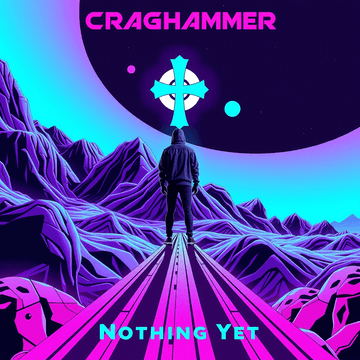
Download zip file of entire curated album
Or preview songs individually